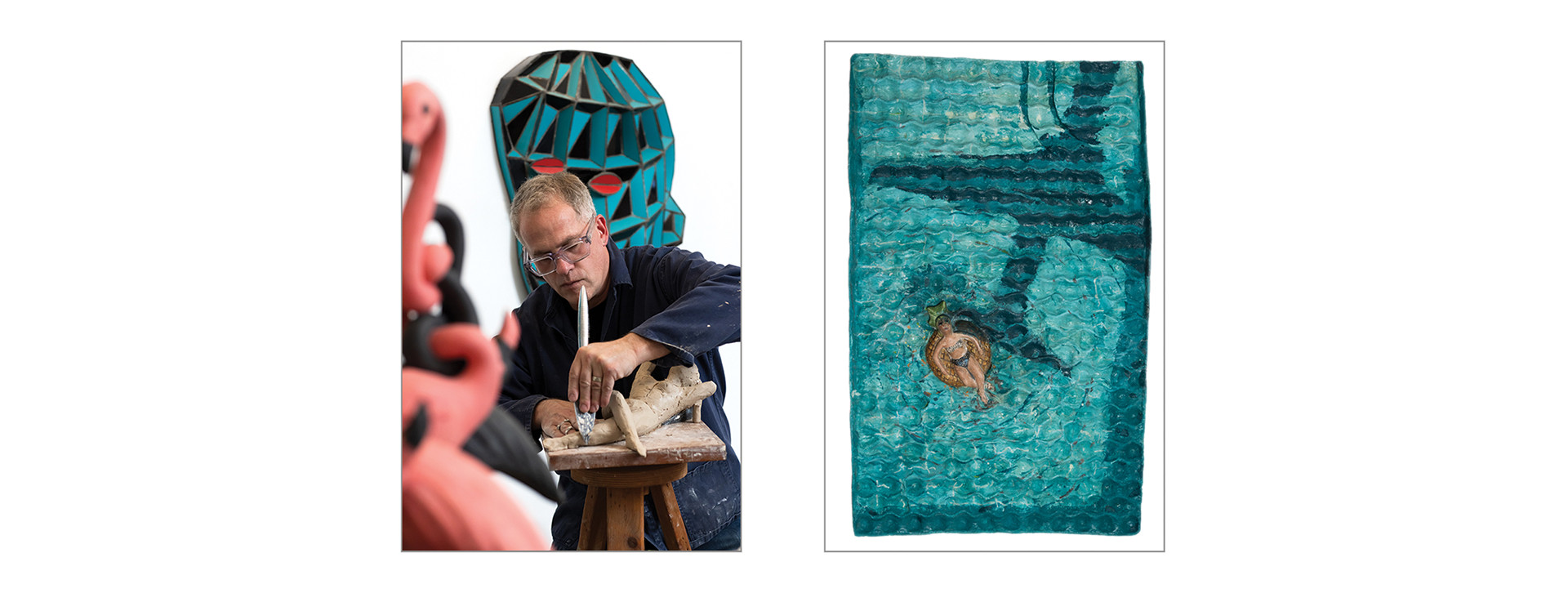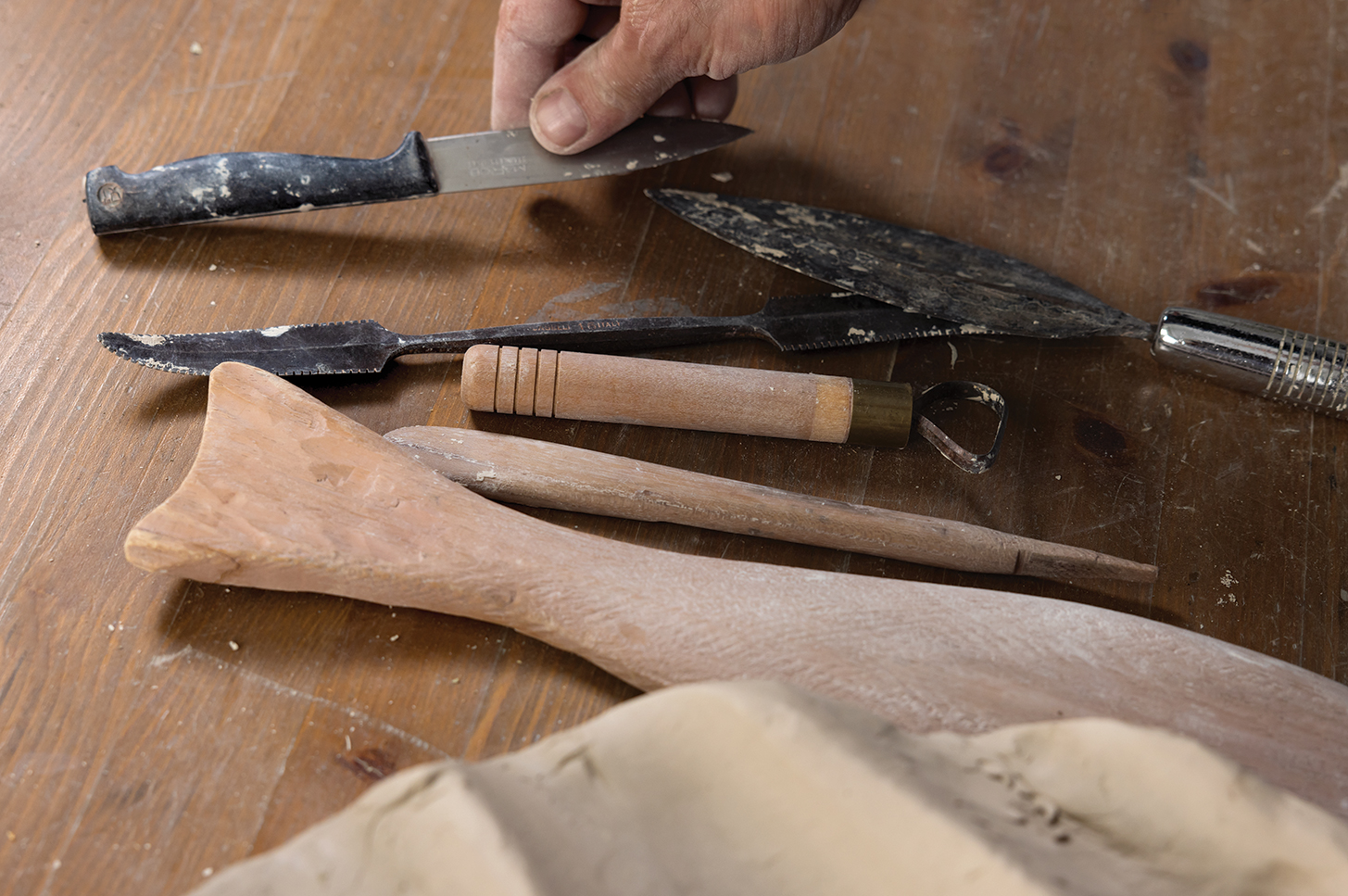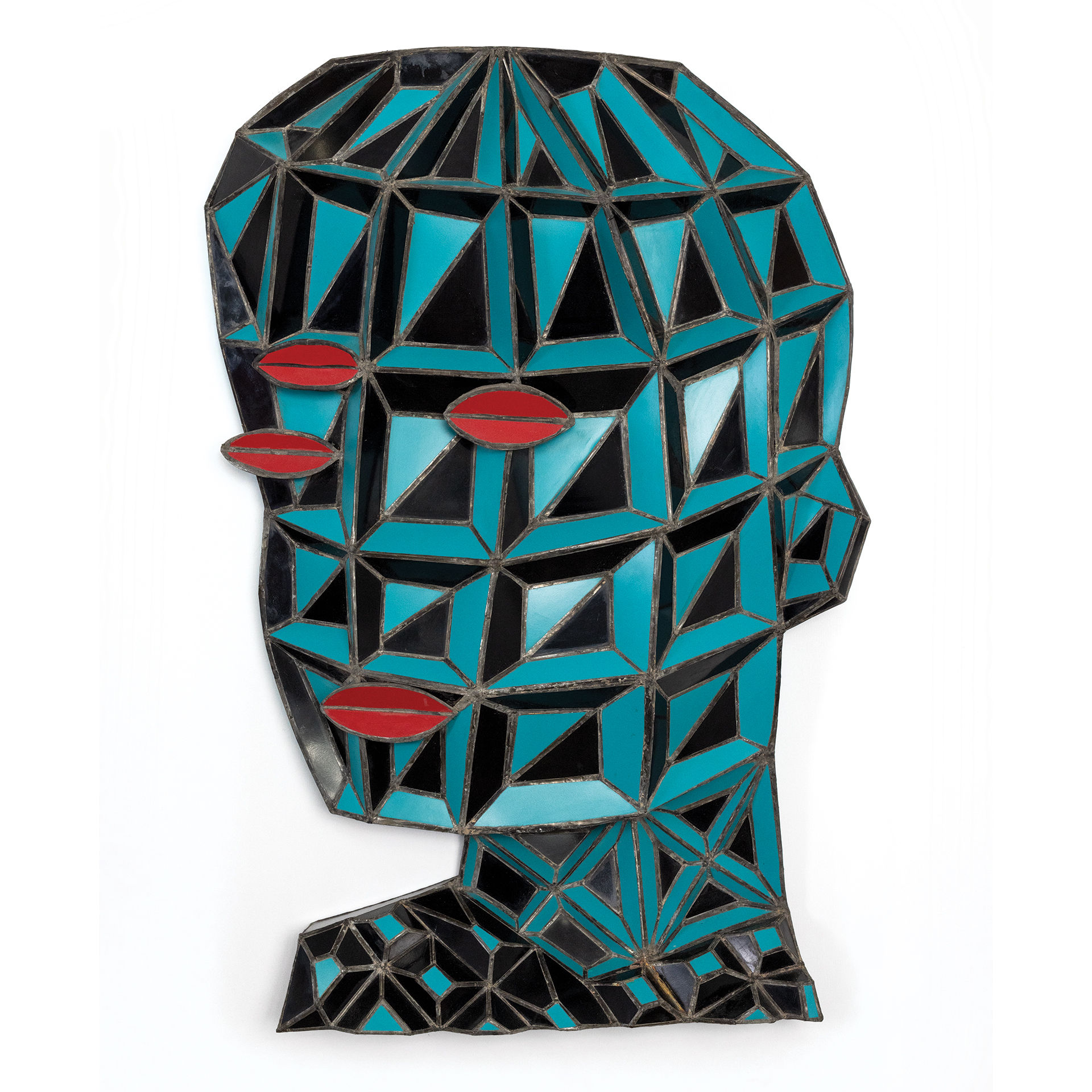Moving from Toronto to Los Angeles in 2022 wasn’t something sculptor Jim Hake had planned. He had been pursuing his career in Canada for 14 years, and in Italy prior to that, working in clay and mixed media. He was also teaching his craft. But when his wife, Silvia Forni, was offered a prestigious post as director of UCLA’s Fowler Museum, it was too good an opportunity to pass up. As it turned out, LA was perfect for Jim and Jim was perfect for LA. Or more specifically, for the Valley.

While continuing his career as a studio artist, Jim has also found an ideal niche at Therapeutic Learning Center for the Blind (TLC) in Reseda, which provides training programs for students with visual impairment or motor skill issues. Ceramics was new to the center when Jim arrived about a year ago to build a studio from the ground up, including custom-built tables for ceramics, in an empty room formerly used for music therapy.
Jim brings not only his skills and talent to his role at TLC, but also first-hand experience. Prior to moving to Toronto, he spent a decade as artistic director of a creative production center in Italy that catered to students with mental and physical challenges.

His job, he says, “is to understand what the individual’s challenges are and try to find ways to turn those into strengths. I had the mother of a student tell me that since her adult son began the program, he’s now using utensils at the table, which he never did before. It’s because of the need to work with tools in the ceramic process.”
“My work has a bit of a slow burn. An important ingredient in my creative process is ambiguity. I don’t want it to hit you over the head. My work often has a level of playfulness to it. Sometimes I’ll have people get back to me months after they’ve experienced the work and tell me that they’re still processing what they saw.”
Supplied with tools specific to their needs and ability, some students create functional ware with a series of simple plaster molds that Jim creates for them to cover in clay. He also teaches “coil building,” rolling out the clay to create long rope-like pieces and then coiling the ropes up to construct walls for vessels or sculptures. “Slab building” is another technique. Students roll out big clay chunks into sheets, cut up the sheets and then use them to create.

A work by Jim that depicts swimmers in a pool who appear to be consumed by ecstasy or horror—are they frolicking or drowning?—while the pool’s sunny surface is marred by the shadows of fighter planes flying overhead.
“I have one student who wasn’t always blind but has been for the past 40 years, and ceramics has opened a floodgate for him. Working from memory, he creates the most amazing figures and animals. His work is raw and fresh and you can see while he’s working that he is in his element as if he’s been waiting his whole life to get these images out of his head and into the world.”
James Sauer, TLC creative arts program director, says that Jim is adept at finding work-arounds for his clients’ physical limits. “Where a brush might be used for glazing, a client might use a car-waxing mitt,” James says. “Rather than being frustrated because you can’t hold a brush, they can use a glove to achieve the same goal.”

In his own work, Jim is constantly experimenting with unorthodox tools and mixed media. In one series of sculptural busts, he uses chopped-up vinyl records and CDs to create the effect of leaded stained glass. His “Paradise Lost” series uses elegant porcelain to create the effect of kitschy plastic lawn flamingos—though he twists body shapes and sometimes reverses the pink-and-black tones of beaks and feathers.
“I like the idea of making these seemingly mass-produced plastic objects in the throes of relationships where they are often interpreted in wildly diverse ways,” Jim says.
His current focus is his “Lost and Found” pieces that incorporate such elements as lost or abandoned gloves found in chilly Toronto that have been frozen into the hand symbols for letters in American Sign Language.

“My work has a bit of a slow burn,” Jim says. “An important ingredient in my creative process is ambiguity. I don’t want it to hit you over the head. My work often has a level of playfulness to it. Sometimes I’ll have people get back to me months after they’ve experienced the work and tell me that they’re still processing what they saw.”
Jim’s teaching might also be described as a slow burn. He says among his teaching experiences, TLC in Reseda has been the most gratifying. “Every day, these students gain more independence in the classroom. They arrive excited and inspired and fill the space with gratitude, joy and love. It’s challenging work, but I leave every day with a full heart.”
Join the Valley Community








